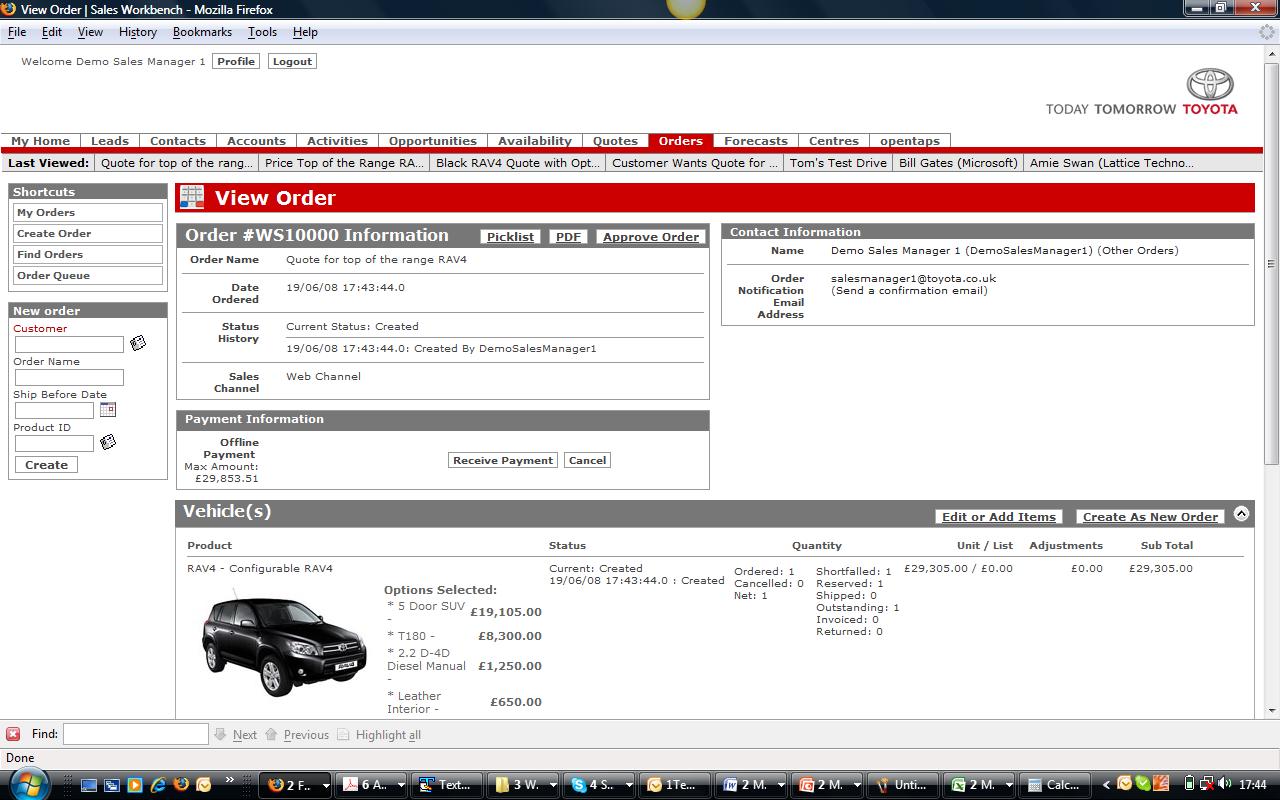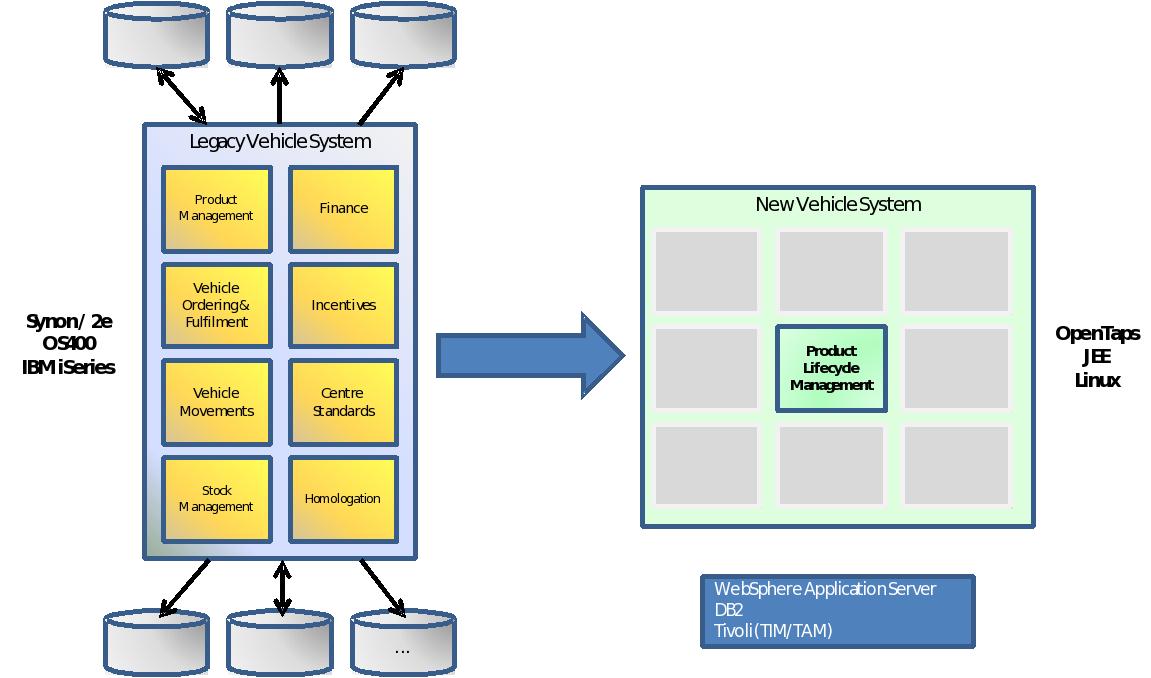clients

Client Name: Toyota
Toyota decides to replace business-critical systems with open source business applications
Toyota chooses open source and 1Tech
This case study describes how one of the world’s most successful companies selected an open source solution to replace the core systems at Toyota (GB) PLC and chose 1Tech to advise on and realise its implementation. Toyota GB had begun the initial phase of a long-term transformation programme which aimed to replace all key systems within the context of a wider strategy developed in conjunction with IBM Global Services.
Toyota and IBM identified opentaps (open source enterprise applications suite) as the potential strategic platform on which to build their systems and 1Tech as Europe’s leading opentaps specialist.
1Tech was initially engaged to justify the selection of opentaps and were given the challenge of developing a working prototype of a system which would allow Toyota and Lexus dealers to manage customers, configure vehicles, produce quotations, take and submit orders and analyse activities and sales. The challenge was in the deadline, which 1Tech met by developing and demonstrating the application in just several weeks.


Toyota (GB) PLC is part of Toyota Motor Corporation the world’s seventh largest company and the second largest global car manufacturer. Importer and distributor for Toyota and Lexus vehicles in the UK, the company is responsible for sales, marketing, after sales and customer relations across its entire UK network of 200 Toyota Centres. 1Tech has been working with Toyota GB plc for a number of years on Information Systems solutions that span the company’s business applications portfolio.


The Problem
Each year, Toyota offers its worldwide marketing subsidiaries a range of vehicles with some 20 million configuration options. Each subsidiary can additionally market a range of locally fitted options ranging from specialist upholstery and trim through to in-car entertainment and navigation systems. From the options available, Toyota GB must create the range which is most likely to succeed in the UK market.
Toyota GB provides a full range of service options, including customisation, which must be supported by a production-like workflow, and the supply of spare parts across the full lifecycle of each model.
To operate successfully, the company must be able to understand trends within the marketplace and respond swiftly to opportunities and challenges. The objective was therefore to develop systems which would support the decision-making process by integrating market intelligence, sales (and lost sales) information and service requirements with brand development, range definition and pricing. The complexity is in the sheer number of permutations available.
Such an objective cannot be attained overnight. It is not just a matter of replacing systems; whilst that is not simple, the biggest challenge was in managing the business change which accompanied it.
To meet these challenges, Toyota developed a progressive approach which would allow each major component to be specified, implemented, verified and adopted before moving on to the next. This supported the need for a sound business change strategy, but had significant ramifications for the implementation of the systems themselves as each new or replaced business application had to be absorbed by the user community whilst its predecessor and supporting legacy applications remained operational behind the scenes.
It is vitally important that such an approach is driven by the business architecture so that dependencies between components are recognised by the sequence of implementation. At the core of the Toyota business architecture is the product lifecycle, around which all business critical systems revolve. The development of a product model and support for Product Lifecycle Management (PLM) was therefore the first priority. Having demonstrated the capabilities of both opentaps and its team, 1Tech were engaged to advise on and implement Product Lifecycle Management, working with in-house legacy system teams to develop a homogeneous solution.


The Solution
- Provide Product Lifecycle Management expertise to ensure that the architectural approach will stand the test of time
- Develop a Product Model which is sufficiently flexible to support not only today’s needs but also undefined future product strategies and the potential for ultimate integration with external systems, whether in-house or elsewhere in the supply chain
- Demonstrate the suitability of opentaps as the long term strategic solution in terms of functionality, architecture and development environment
- Understand user requirements in detail and define a software architecture to support them by using standard opentaps entities and services with extensions and customisations where necessary
- Design a user experience model which is intuitive and easy to use despite the underlying complexity of product configuration
- Rapidly implement and test instances of all legacy system interfaces by means of prototyping to ‘derisk’ the strategy
- Integrate the open source software opentaps through implementing additional support where needed to enable the applications to be deployed on Toyota’s strategic technical architecture:
- DB2 (RDBMS)
- IBM WebSphere Application Server (Application Server)
- IBM WebSphere ESB 6.1 (SOA Enterprise Service Bus)
- IBM HTTP Server (Web Server)
- Linux OS
- Integrate the 1Tech implementation team with Toyota legacy teams, development processes and programme management
- Accurately estimate the costs and effort required to achieve the solution
- Provide project management and architectural expertise to ensure the delivery of a sound solution within budgeted costs and timescales
- Provide a full range of support services both during and after implementation


The Result
- Tracing of a ‘concrete' product model based on vehicles, engines, colour, trim etc. to a new, abstract, ISO-compliant, recursive product-part structure with the ability to specify configuration ‘rules'
- Construction of a software architecture fully mapped to Toyota's business architecture and legacy data model using UML models
- Construction of a prototype to prove all systems interfaces within the first two weeks of the project
- Implementation of the Product Model in opentaps, using and extending core opentaps entities
- Product maintenance using standard opentaps services
- Integration with Legacy Systems via an Enterprise Service Bus (ESB), using opentaps as the source of product data maintenance for the legacy systems with failsafe mechanisms to ensure consistency of data
- Integration of 1Tech's assured Open Source Integration Methodology (1TechOSIM) based on RUP with Toyota's Information Systems Methodology (ISM), Information Systems Project Methodology (ISPM), and Development Process (RUP) to achieve seamless interaction between 1Tech an in-house teams
- Based on Toyota's exposure to 1Tech's approach and skills from an early stage, 1Tech were additionally engaged to advise on, refine and integrate all related Toyota processes and techniques. This is described in a separate Case Study, See Case Study Toyota invest in 1Tech's process engineering expertise
- Implementation of a sound, flexible product model on which to build subsequent components and applications
- No licence fees and the implementation of core functionality using standard components, as well as out-of-the box administrative functions, led to the cost of the new development being a fraction of the expected overall project costs

1Tech not only demonstrated the ability to deliver industrial-strength, business-critical applications to a major and complex
enterprise, but also to work within and contribute to a disciplined, quality-oriented organisation.
As a result, the strategy has created much interest within Toyota’s worldwide community and we anticipate a long term
involvement in helping this already immensely successful organisation continue to build on its capabilities and commercial
achievements.




